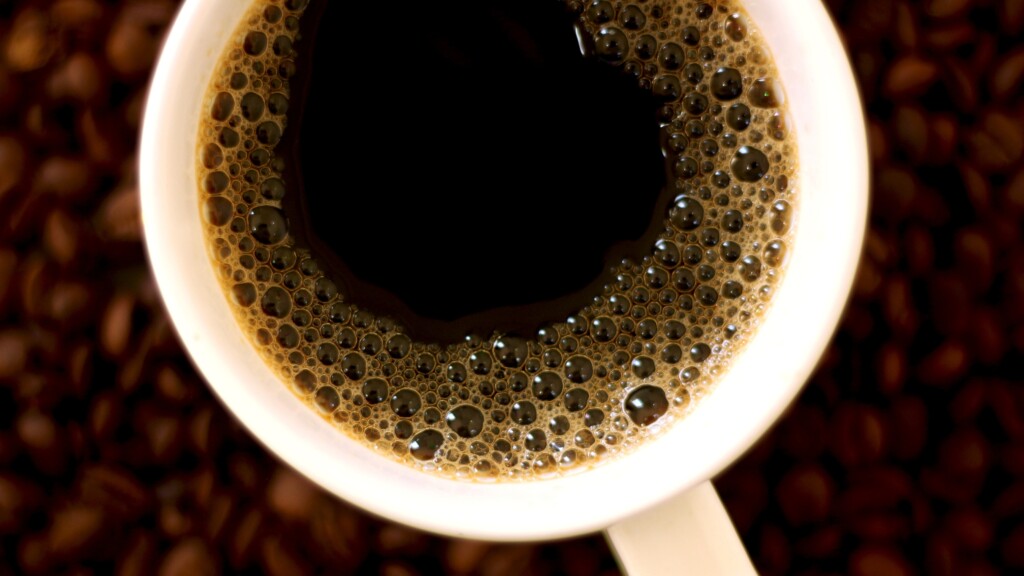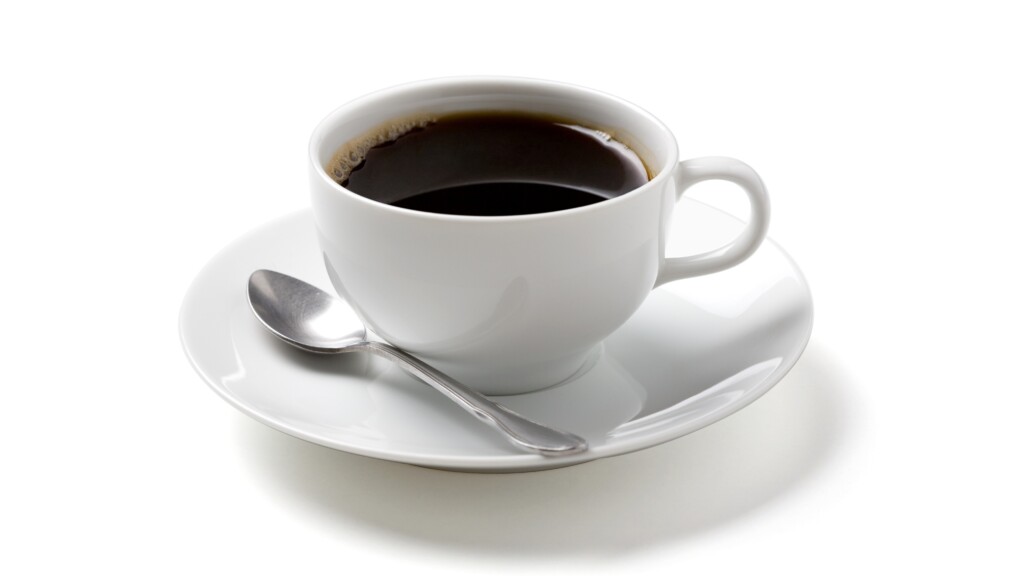Black coffee is one of the most preferred and loved beverages. Apart from speeding the weight loss, black coffee craze has never disappointed the coffee aficionados.
Even there are number of celebrities who too have black coffee through the day to maintain their weight which is the primary reason why black coffee has never gone out of trend. Many people think that it is easy to relish this healthy beverage only if they get a coffee machine at home but that’s not at all true.
If you are way too much love with your black coffee or just want to try it at home, we have number of easy recipes of black coffee for you.

What is Black Coffee?
Black coffee refers to coffee that is brewed from coffee beans and water without the addition of any extras like milk, cream, sugar, or flavourings. It’s often called “black” because of its dark colour and strong, pure coffee flavour. Black coffee tends to have a robust and strong flavour profile. The taste can vary depending on factors like the type of coffee bean, the roast level, and the brewing method. Black coffee retains the full caffeine content of the coffee beans. It is often consumed for its stimulating effect due to the caffeine.
There are numerous types of coffee beans available, such as Arabica and Robusta, and different roast levels, ranging from light to dark. Each combination offers a unique flavour profile in black coffee. While black coffee is typically consumed without any additives, some people enjoy experimenting with it by adding sweeteners like sugar, honey, or syrups, or by introducing flavourings like cinnamon or nutmeg.

Different Methods of Making Black Coffee
Black coffee can be prepared using various methods, each offering a slightly different flavour profile and brewing experience. Here are some common methods to help you make black coffee:
1. Drip Coffee Maker
This is one of the most popular and convenient methods.
Place coffee grounds in a paper or metal filter in the machine’s basket.
Add water to the reservoir, and the machine will heat the water and drip it over the coffee grounds, collecting the brewed coffee in a pot or carafe below.
2. Pour-Over Coffee
Requires a pour-over dripper, paper filter, ground coffee, and hot water.
Place the filter in the dripper, add coffee grounds, and position it over a coffee mug or carafe.
Slowly pour hot water in a circular motion over the coffee grounds, allowing it to drip through and collect in the mug or carafe.
3. French Press (Press Pot)
Coarsely ground coffee is steeped with hot water in a press pot.
After steeping for a few minutes, a metal or mesh plunger is pressed down to separate the grounds from the liquid.
The result is a rich, full-bodied coffee.
4. AeroPress
The AeroPress is a portable and versatile coffee maker.
It uses air pressure to extract coffee flavours quickly.
Ground coffee and hot water are mixed in the AeroPress, and then the plunger is pressed to force the liquid through a filter.
5. Espresso Machine
Espresso is a concentrated coffee brewed by forcing hot water through finely ground coffee beans under pressure.
Americano: A black coffee is made by diluting espresso with hot water.
Long Black: Similar to an Americano but with a different brewing method, where hot water is added to the cup first and espresso is poured over it.
6. Cold Brew
Coarsely ground coffee is steeped in cold water for an extended period (usually 12-24 hours).
The result is a smooth, less acidic coffee concentrate that can be diluted with water and served cold or over ice.
7. Turkish Coffee
Finely ground coffee, water, and sometimes sugar are combined in a special pot called a cezve.
The mixture is brewed over low heat and often served in a small cup with grounds settled at the bottom.
8. Moka Pot (Stovetop Espresso Maker)
Ground coffee is placed in a filter basket, and water is added to a bottom chamber.
As the water heats, it creates pressure, forcing the water through the coffee grounds and into an upper chamber, similar to espresso.
9. Chemex
A Chemex pour-over coffee maker uses a specific filter and brews coffee with a clean and crisp taste.
It involves a slow and controlled pour-over process.
10. Siphon (Vacuum Pot)
A visually impressive method that uses a vacuum process to brew coffee.
Water is heated in a bottom chamber, and coffee grounds are placed in an upper chamber. As the water heats, it is forced into the upper chamber, brewing the coffee, which is one of the fanciest ways to make black coffee.
Each of these methods can produce black coffee with distinct flavours and strengths, making it possible for coffee enthusiasts to find their preferred brewing style. Experimentation with different beans, grind sizes, and brewing times can also further customize the flavour of your black coffee.

Advantages of Black Coffee
Black coffee, often consumed without additives like milk or sugar, offers several potential advantages:
- Low in Calories: Black coffee is very low in calories, making it a suitable choice for those looking to manage their weight.
- Boosts Alertness: The caffeine in black coffee is a natural stimulant that can enhance alertness, concentration, and mental clarity. It can help combat drowsiness and improve cognitive function.
- Enhances Physical Performance: Caffeine in black coffee can increase adrenaline levels, which may improve physical performance during activities like exercise or sports.
- Rich in Antioxidants: Coffee is a significant source of antioxidants, which can help protect cells from damage caused by free radicals. Antioxidants have been linked to various health benefits.
- May Reduce the Risk of Certain Diseases: Some studies suggest that coffee consumption is associated with a reduced risk of certain conditions, including Parkinson’s disease, Alzheimer’s disease, type 2 diabetes, and certain types of cancer.
- Liver Health: Moderate coffee consumption has been linked to a lower risk of liver diseases, including liver fibrosis and cirrhosis.
- Heart Health: Some research suggests that coffee consumption may be associated with a reduced risk of heart diseases, such as heart attacks and strokes.
- Mood Enhancement: Coffee consumption is often linked to improved mood and reduced risk of depression. It can stimulate the release of mood-enhancing neurotransmitters like dopamine and serotonin.
- Appetite Suppression: Caffeine can act as an appetite suppressant, which may help some individuals control their calorie intake.
- Social Benefits: Coffee is often enjoyed in social settings, providing opportunities for social interaction and relaxation.
- Convenience: Black coffee is easy to prepare and can be enjoyed hot or cold. It’s readily available in many locations, making it a convenient choice for a quick energy boost.
- Customizable: Black coffee can be customized to suit individual preferences by adjusting factors like the type of beans, roast level, grind size, and brewing method.

Disadvantages of Black Coffee
While black coffee has its advantages, it also has some potential disadvantages, especially when consumed in excess or by individuals with certain sensitivities or medical conditions. Here are some common disadvantages of black coffee:
- Caffeine-Related Side Effects: Caffeine, present in coffee, can lead to side effects such as jitteriness, restlessness, increased heart rate, and anxiety, especially in sensitive individuals. It can disrupt sleep patterns if consumed too late in the day, leading to sleep disturbances and insomnia.
- Digestive Issues: Coffee is acidic and can lead to digestive discomfort for some people, causing symptoms like heartburn, acid reflux, or stomach irritation.
- Dehydration: Coffee is a diuretic, which means it may increase urine production and potentially lead to dehydration if not consumed in moderation.
- Stomach Issues: Coffee can stimulate the production of stomach acid, potentially exacerbating issues for individuals with gastritis, acid reflux, or ulcers.
- Addiction and Tolerance: To make black coffee depends on the addiction of one individual. Hence, regular consumption of caffeine can lead to physical dependence and tolerance, requiring higher doses to achieve the same stimulating effects.
- Withdrawal Symptoms: Reducing or quitting coffee consumption after regular use can lead to withdrawal symptoms, including headaches, fatigue, irritability, and mood swings.
- Bone Health: Some studies suggest that excessive coffee consumption may be linked to decreased bone density, potentially increasing the risk of osteoporosis.
- Iron Absorption: Coffee may inhibit the absorption of non-heme iron (found in plant-based foods) when consumed with meals, potentially affecting individuals with iron-deficiency anemia.
- Stains Teeth: Coffee is known to stain teeth over time, which may require teeth-whitening procedures for cosmetic purposes.
- Anxiety and Nervousness: The stimulating effects of caffeine can trigger or exacerbate anxiety and nervousness, particularly in individuals prone to anxiety disorders.
- Blood Pressure: Caffeine can temporarily raise blood pressure, potentially posing risks to individuals with hypertension or cardiovascular conditions.
- Pregnancy Concerns: Pregnant individuals are often advised to limit caffeine intake, as excessive caffeine consumption during pregnancy may be associated with adverse pregnancy outcomes.
- Migraines and Headaches: For some individuals, caffeine can trigger migraines or worsen existing headaches.
Additionally, excessive caffeine consumption can lead to negative health effects, including sleep disturbances and increased anxiety. It’s advisable to consume coffee in moderation and be mindful of personal tolerance levels. If you have specific health concerns or conditions, consult with a healthcare professional for personalized guidance on coffee consumption.
FAQs
- How to make black coffee with Nescafe?
To make black coffee with Nescafe instant coffee, simply measure one teaspoon of Nescafe coffee granules per 6 to 8 ounces of hot, not boiling, water. Pour the hot water over the coffee granules in your cup and stir well until the coffee is fully dissolved. Let it steep for a minute or two to develop the flavour. Adjust the coffee-to-water ratio to your taste preference for a stronger or milder brew. You can add sugar or a sweetener if desired, but it’s typically enjoyed without milk or cream to maintain its “black” status. This method offers a quick and convenient way to enjoy a cup of black coffee.
- How to make black coffee at home?
If you are interested to make black coffee at home, then measure one to two tablespoons of ground coffee per 6 ounces of hot water. Brew the coffee using your preferred method (drip, pour-over, French press, etc.), and let it steep for a few minutes. Serve it without milk or sugar for a classic black coffee.
- What is the best time to drink black coffee for weight loss?
The best time to drink black coffee for weight loss is in the morning before breakfast. Consuming it on an empty stomach can boost metabolism and help burn fat. However, moderation is key, and excessive coffee intake should be avoided.
- How does black coffee taste?
Black coffee has a bold, slightly bitter flavour with subtle earthy and nutty notes. Its taste can vary depending on the coffee bean type and brewing method used.
- Which coffee powder is best for black coffee?
For a robust and flavourful black coffee, choose a high-quality medium or dark roast coffee powder. These roasts provide a rich and bold taste profile.









